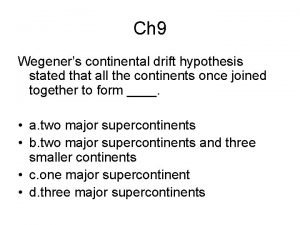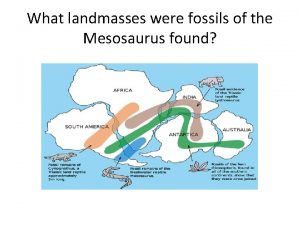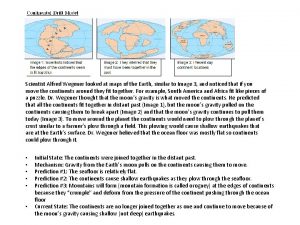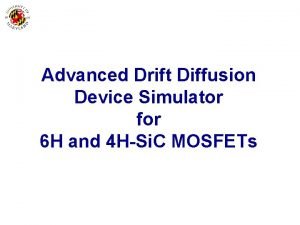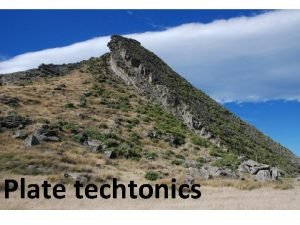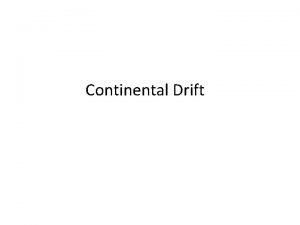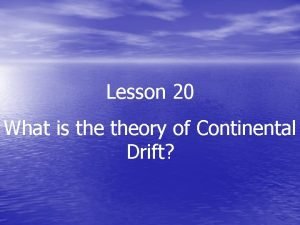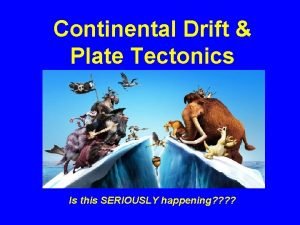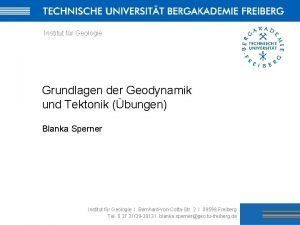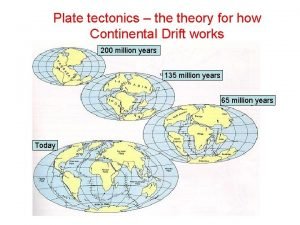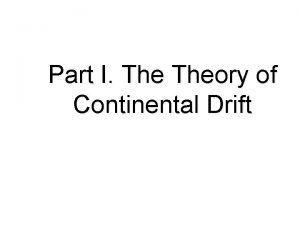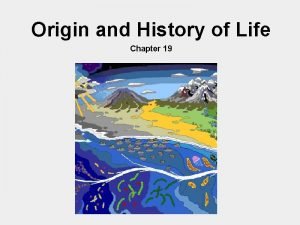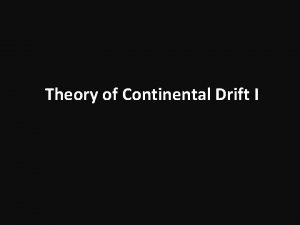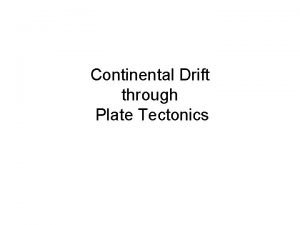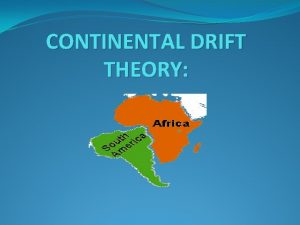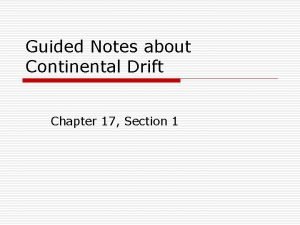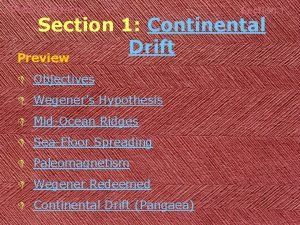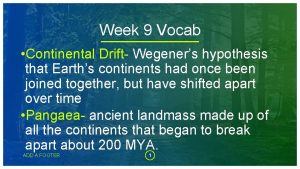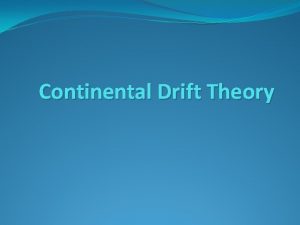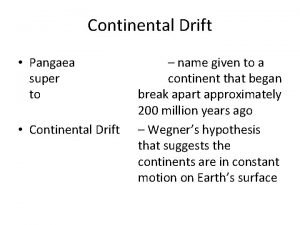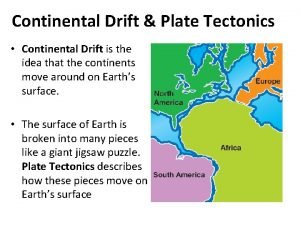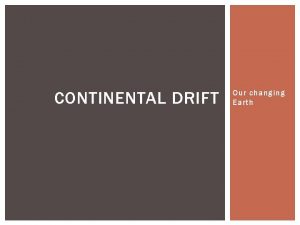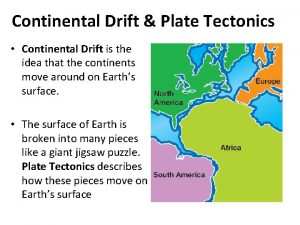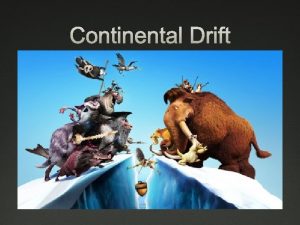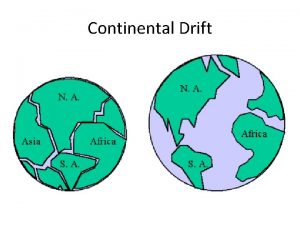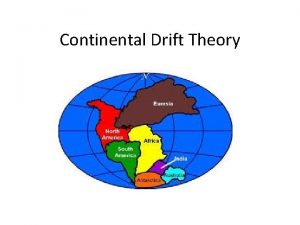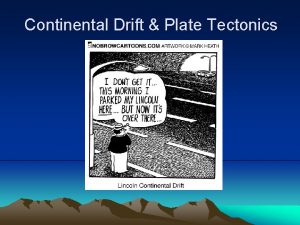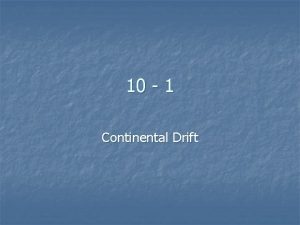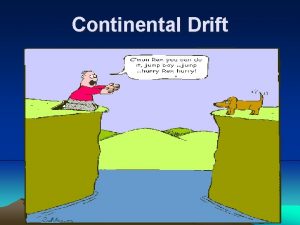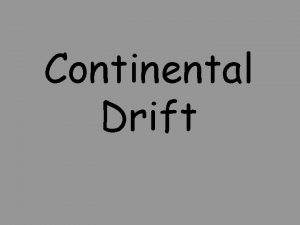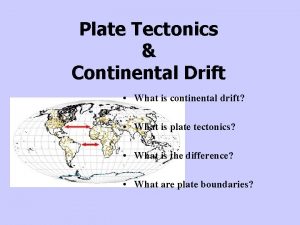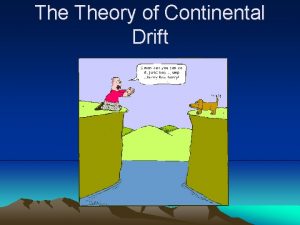Ch 9 Wegeners continental drift hypothesis stated that





















- Slides: 21

Ch 9 Wegener’s continental drift hypothesis stated that all the continents once joined together to form ____. • a. two major supercontinents • b. two major supercontinents and three smaller continents • c. one major supercontinent • d. three major supercontinents

Ch 9 The supercontinent in the continental drift hypothesis was called ____. • • a. Panthalassa b. Pangaea c. Mesosaurus d. Africa

Ch 9 What hypothesis states that the continents were once joined to form a single supercontinent? • • a. plate tectonics c. continental drift b. seafloor spreading d. paleomagnetism

Ch 9 In the plate tectonics theory, the lithosphere is divided into ____. • • a. 100 major plates b. 7 major plates and many smaller plates c. many small plates, but no large plates d. 50 major plates and many smaller plates

Ch 9 The lithospheric plates move an average of ____. • • a. 5 inches per year b. 50 inches per year c. 5 centimeters per year d. 50 centimeters per year

Ch 9 A tectonic plate consists of ____. • • a. the crust and uppermost mantle b. the oceanic and continental crust only c. the crust and entire mantle d. the asthenosphere only

Ch 9 Which of the following is a geographic example of a transform fault boundary? • • a. the East African Rift valley b. the San Andreas Fault c. the Mid-Atlantic Ridge d. the Andes Mountains

Ch 9 New ocean crust is formed at ____. • • a. divergent boundaries c. continental volcanic arcs b. convergent boundaries d. transform fault boundaries

Ch 9 Which of the following results when divergence occurs between two oceanic plates? • a. seafloor spreading • b. a subduction zone • c. an ocean trench • d. a volcanic island arc

Ch 9 What forms when one oceanic plate is forced beneath another plate? • a. an ocean basin • b. an ocean ridge • c. a subduction zone • d. a rift valley

Ch 9 Deep ocean trenches are associated with ____. • • a. ocean ridge systems b. subduction zones c. transform fault boundaries d. rift zones

Ch 9 • What type of plate boundary is illustrated in Figure 9 -1? • a. transform fault boundary • b. divergent boundary • c. convergent oceanic-oceanic boundary • d. convergent oceanic-continental boundary

Ch 9 Volcanic island arcs are associated with what type of plate boundary? • a. divergent boundary • b. convergent continental-continental boundary • c. convergent oceanic-continental boundary • d. convergent oceanic-oceanic boundary

Ch 9 Continental volcanic arcs are associated with what type of plate boundary? • a. convergent continental-continental boundary • b. convergent oceanic-continental boundary • c. transform fault boundary • d. convergent oceanic-oceanic boundary

Ch 9 If a deep ocean trench is located adjacent to a continent, active volcanoes would likely be found ____. • • a. seaward from the trench b. along the axis of the trench c. at the ends of the trench d. landward from the trench

Ch 9 Why are subduction zones not commonly found at convergent continental-continental boundaries? • a. Continental lithosphere is too buoyant to be forced down into the mantle. • b. Subduction zones are never found at convergent boundaries. • c. Oceanic lithosphere is too buoyant to be forced down into the mantle. • d. Continental lithosphere is too dense to be forced down into the mantle.

Ch 9 Strips of alternating magnetic polarities found in rocks in the ocean basins ____. • a. conflict with theory of plate tectonics • b. provide evidence that Earth’s magnetic field has never reversed polarity • c. indicate changes in Earth’s gravitation field • d. provide evidence for seafloor spreading.

Ch 9 What do the strips of low-intensity magnetism represent on the ocean floor? • a. areas where there is no magnetism • b. areas where the rocks have a normal polarity • c. areas where the rocks have a reversed polarity • d. areas of different types of rock.

Ch 9 What feature is labeled A in Figure 9 -2? • a. subduction zone • b. trench • c. volcanic island arc • d. continental volcanic arc

Ch 9 According to Figure 9 -2, if the plate labeled H descends into Earth’s interior, what will occur between the positions labeled Y and X? • a. The rock at X will be cooler than the rock at Y. • b. Earthquake foci will be shallower at Y and increase in depth at X. • c. Earthquake foci will be deeper at Y and decrease in depth at X. • d. Rifting will begin to occur between Y and X.

Ch 9 According to Figure 9 -2, if the plate labeled H descends into Earth’s interior, what will occur between the positions labeled Y and X? • a. The rock at X will be cooler than the rock at Y. • b. Earthquake foci will be shallower at Y and increase in depth at X. • c. Earthquake foci will be deeper at Y and decrease in depth at X. • d. Rifting will begin to occur between Y and X.
 What type of
What type of Mosasaurus continental drift
Mosasaurus continental drift Compare continental drift and plate tectonics
Compare continental drift and plate tectonics Continental drift simulator
Continental drift simulator Continental drift vs plate tectonics
Continental drift vs plate tectonics Paleoglaciation continental drift
Paleoglaciation continental drift Continental drift theory
Continental drift theory Plate tectonics vs continental drift
Plate tectonics vs continental drift Continental drift
Continental drift Continental drift theory notes
Continental drift theory notes Continental drift
Continental drift Continental drift adalah
Continental drift adalah Magnetic reversals
Magnetic reversals Continental drift
Continental drift Fossil correlation continental drift
Fossil correlation continental drift Continental drift
Continental drift Proof of continental drift theory
Proof of continental drift theory Continental drift warm up
Continental drift warm up Continental drift vs plate tectonics
Continental drift vs plate tectonics Continental drift
Continental drift Continental drift timeline
Continental drift timeline Section 1 continental drift
Section 1 continental drift
